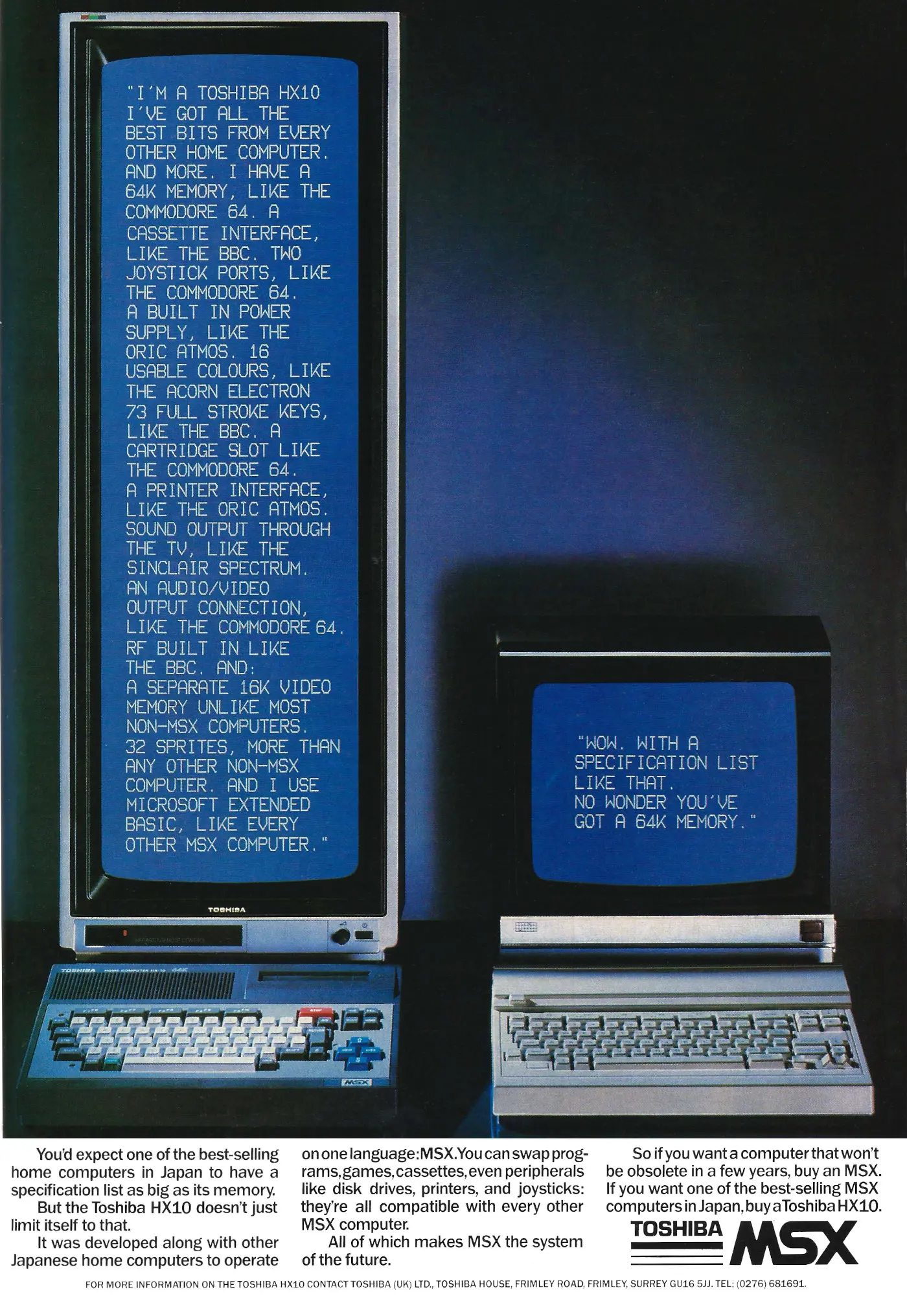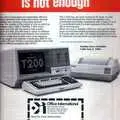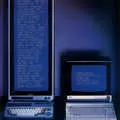Toshiba Advert - October 1984
From A-Z of Personal Computers

Toshiba MSX
Although Toshiba had dabbled in the computer market a couple of years before, with its T-200, and whilst the US and the UK markets were busy churning out as may systems as possible without regard to compatibility or future-proofing, the Japanese were being far more measured and had mostly hesitated to jump on to the home computer market because of a lack of standards - Toshiba not least as it had been burned by the arrival of the IBM PC.
As an aside, Jack Tramiel - founder of Commodore - had visited Japan and had seen how Japanese industry could work. He famously said that "the Japanese are coming" and that Commodore should "become the Japanese", a sentiment echoed by UK rival Clive Sinclair, who stated in an interview with Personal Computer News in 1983 that:
"I think it's very difficult to beat Japanese competition because it's extremely efficient, but I do think it can be done. In order to do it, one must match Japanese excellence in areas where they are excellent; in terms of the quality of the product and scale of operation"[1].
The Japanese didn't actually come for a while and a general hesitance to enter the market remained until the MSX consortium, backed by Microsoft Japan, arrived in June 1983[2] - although machines didn't really ship until 1984 - with manuafacturers like Yamaha, Sony, Sanyo, Fujitsu, Canon and Toshiba piling in.
MSX systems were all based on the same Z80 CPU, TI 9188 graphics, Intel I/O and General Instrument's AY-3-8910 sound chip[3] - the same as used in the Oric Atmos and Memotech MTX series[4] - and so could share peripherals and software.
The machine itself initially reviewed quite well: writing in September 1984's "Your Computer", Graham Bland said:
"Overall, the HX-10 is a pleasurable system to use. It does have its drawbacks but these are generally too few to worry about. It is much better than the ill-fated Spectravideo [but is] curiously faster with the obvious advantage of a full-pitch keyboard".
He went on to predict that:
"...it will probably be next year [1985] at the earliest before software houses have the courage to reduce MSX software prices depending, of course, on whether MSX takes off in the UK".
Sadly, for Toshiba at least, it launched into the US and UK at a time when the markets were stuffed with 8-bit machines (the Christmas '84 period, which was only two months away, has been described as a sales wasteland and marked the end of the home computer explosion), and so more-or-less disappeared without trace.
This was lucky for the domestic manufacturers who had been somewhat terrified that MSX might destroy the UK computer industry in the same way as the Japanese had done for electronics and motorbikes, amongst others (there's a much-more detailed history of MSX over at the Register).
Meanwhile, the advert itself is a nice example of "analogue Photoshopping" though, with the ridiculously-tall monitor sported by the Tosh machine on the left.
The text of the humungo-monitor is aimed at the competition, with a lengthy list of "best bits" it had apparently pinched from other micros. These weren't always the best-specced competition though, hence it only has 16 colours "like the Acorn Electron".
Just a pity it couldn't do lower case, like the Commodore PET.
Date created: 02 January 2024
Last updated: 03 September 2025
Hint: use left and right cursor keys to navigate between adverts.
Sources
Text and otherwise-uncredited photos © nosher.net 2025. Dollar/GBP conversions, where used, assume $1.50 to £1. "Now" prices are calculated dynamically using average RPI per year.

